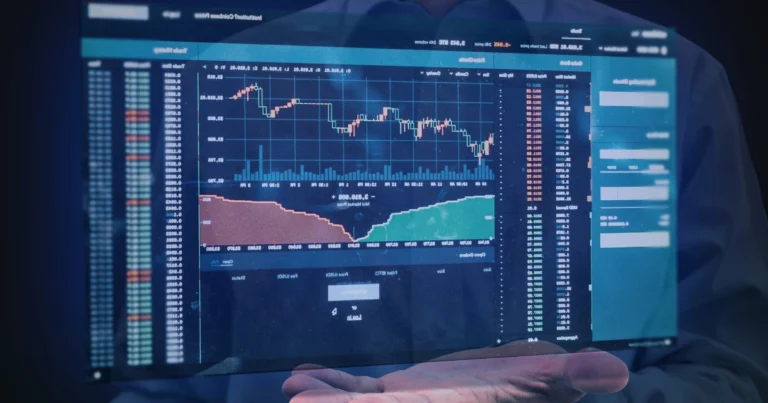Trading can be an exhilarating journey. The thrill of making profitable trades, the challenge of navigating unpredictable markets, and the opportunity to build wealth are all compelling reasons why people are drawn to it. However, many novice traders quickly learn that while the potential rewards can be significant, the risks can be equally daunting. If you don’t manage those risks properly, it’s easy to see your hard-earned capital disappear.
This is where risk management comes in. As a trader, you need to hone essential risk management skills to safeguard your investments and ensure long-term success. It’s not enough to rely solely on your ability to analyze the market; understanding and controlling the risks you take are just as critical. In this article, you’ll learn the essential risk management skills every trader should master to minimize losses and maximize profitability.
Table of Contents
What is Risk Management in Trading?

Before diving into the specific skills, it’s important to understand what risk management actually means in the context of trading. Risk management involves the methods and approaches traders use to safeguard their investments and minimize the chances of significant losses. It’s about controlling exposure and making sure that no single trade can wipe out a significant portion of your portfolio.
In the world of trading, risk is inevitable. Markets are volatile, and the chances of a trade moving against you are always present. But by managing your risks effectively, you can limit the negative impacts of a bad trade and keep your overall portfolio intact. Whether you’re a novice or a seasoned trader, mastering risk management will help you make informed, calculated decisions that lead to sustainable trading success.
Key Risk Management Skills Every Trader Should Master
Mastering risk management requires discipline, patience, and an understanding of several essential skills. Below are the key risk management techniques that can help you protect your investments and thrive as a trader.

1. Setting Stop Losses and Take Profits
Why Stop Losses and Take Profits Matter
Stop losses and take profits are two of the most basic yet powerful tools in a trader’s risk management arsenal. They automatically execute trades to minimize your losses and lock in your profits, helping you stick to your trading plan even when emotions might tell you to act impulsively.
- Stop Losses: A stop loss is an order that automatically closes your position when the market moves against you by a certain amount. It’s a way to limit your losses and prevent them from spiraling out of control.
- Take Profits: A take profit order works in the opposite way of a stop loss. It automatically closes your position when the price reaches a certain level of profit. This ensures that you don’t let a winning trade turn into a losing one by holding onto it for too long.
By setting these orders in advance, you eliminate the need for constant monitoring of your positions, and you avoid the temptation to second-guess your decisions.
How to Set Effective Stop Losses
To set an effective stop loss, you need to consider various factors, such as market volatility, the asset you’re trading, and your risk tolerance. A common mistake is placing a stop loss too close to the current price, which may cause it to be triggered by normal market fluctuations. On the other hand, placing it too far away can expose you to larger losses than you’re comfortable with.
Using Take Profits Strategically
Setting your take profit at the right level is equally important. You don’t want to set it too close to the entry point and miss out on potential gains, but you also don’t want to set it too far away, hoping for a big profit and risking a reversal. It’s important to analyze the market and set realistic profit targets that align with your trading strategy.
2. Position Sizing: Protecting Your Capital
The Importance of Position Sizing
Position sizing plays a vital role in managing risk effectively. It determines how much capital you allocate to each trade and plays a key role in how much you stand to lose (or gain) on any given trade.
Let’s say you have a trading account with $10,000, and you decide to risk 2% of your capital per trade. In this case, you would be willing to lose $200 on any given trade. If you risk more than that, you risk overexposing yourself to potential losses. Conversely, if you risk less, you might miss out on profitable opportunities.
Position Sizing Strategies
- The Kelly Criterion: This method helps you determine the optimal position size based on your expected win rate and the potential profit of each trade. While it’s a more advanced strategy, it can be very effective when used correctly.
- Fixed Fractional Method: is a straightforward approach where you decide to risk a consistent percentage of your total account balance on every trade. For example, if your account balance is $10,000 and you risk 2%, you would risk $200 on each trade.
Proper position sizing ensures that even if a trade goes wrong, the loss is small enough not to affect your overall portfolio significantly.
3. Risk-to-Reward Ratio: Maximizing Gains
What is the Risk-to-Reward Ratio?
The risk-to-reward ratio is a straightforward concept: it measures the potential loss you could face on a trade (the risk) compared to the potential profit (the reward). For example, if you’re willing to risk $100 to make $300 on a trade, your risk-to-reward ratio is 1:3.
A favorable risk-to-reward ratio ensures that even if your trades don’t win every time, your profitable trades will more than compensate for your losses.
How to Use the Risk-to-Reward Ratio in Your Trades
Before entering a trade, always calculate the potential risk and reward. Aim for a risk-to-reward ratio of at least 1:2, meaning you’re willing to risk one dollar for every two dollars you expect to gain. This ratio helps you focus on trades with high potential returns and avoid low-reward opportunities that aren’t worth the risk.
4. Diversification: Spreading Risk Across Markets
The Role of Diversification in Risk Management
Diversification is a technique that involves spreading your investments across different asset classes or markets to reduce risk. By not putting all your eggs in one basket, you decrease the chances that a single bad trade will significantly impact your portfolio.
For example, if you only trade stocks and the market crashes, your entire portfolio may be affected. However, if you also trade forex or commodities, a downturn in one market may be offset by a rise in another.
How to Diversify Effectively
- Asset Class Diversification: Spread your investments across stocks, bonds, forex, commodities, and real estate.
- Geographical Diversification: Consider trading in different countries and regions to reduce risk related to economic downturns or geopolitical events.
- Industry Diversification: Don’t put all your investments into a single industry. For example, if you primarily trade tech stocks, consider branching out into other sectors like healthcare or energy.
5. Emotional Control and Psychological Risk Management
Why Emotions are a Trader’s Worst Enemy
Trading is often an emotional rollercoaster. You may feel excitement when your trades are profitable and frustration when you experience losses. These emotions can cloud your judgment and lead to impulsive decisions that undermine your risk management strategy.
Techniques for Controlling Emotions
To avoid emotional trading, you need to develop a disciplined mindset. This includes:
- Setting Clear Goals: Set specific trading objectives and stay committed to achieving them.
- Taking Breaks: If you find yourself feeling frustrated or overly excited, take a step back and clear your mind.
- Journaling: Keep a trading journal to reflect on your decisions and learn from both your successes and mistakes.
By keeping your emotions in check, you can make more rational decisions and stick to your risk management plan, even during periods of market volatility.
Best Practices for Mastering Risk Management
6. Continuously Educate Yourself
Risk management is a dynamic field that evolves with the market. To stay ahead, you must continuously educate yourself by reading books, attending webinars, and taking courses. The more you learn, the better prepared you’ll be to make smart, well-informed decisions.
7. Regularly Review Your Trading Strategy
As market conditions change, so should your trading strategy. Regularly reviewing your risk management plan will help you identify areas for improvement and adjust to new market trends or volatility. Keep track of your win rate, drawdown, and other metrics to assess the effectiveness of your strategy.
Conclusion: The Path to Sustainable Trading Success
Risk management is not just a set of rules to follow—it’s a mindset and a way of life for successful traders. By mastering the essential skills outlined in this article, you’ll be better prepared to navigate the ups and downs of the market and protect your hard-earned capital. Remember, trading is a marathon, not a sprint, and managing risk effectively is key to long-term success.
Don’t leave your future in the hands of luck—take control of your risk management today. Start implementing these strategies, refine your skills, and watch your trading journey evolve into a more profitable and sustainable one.
FAQ: Essential Risk Management Skills for Traders
- What are the most important risk management skills for traders?
- Stop losses, position sizing, emotional control, and diversification are the key skills.
- How does risk-to-reward ratio affect my trades?
- A higher risk-to-reward ratio increases the likelihood of making more money in the long run, even if you don’t win every trade.
- How can I control my emotions when trading?
- Practice emotional discipline through techniques like meditation, journaling, and taking regular breaks.
- What is the best way to avoid overleveraging in trading?
- Always use proper position sizing and be cautious when using margin. Refrain from putting too much of your capital at stake in one trade.
By mastering these risk management techniques, you can ensure that you protect your capital, reduce unnecessary losses, and stay on track toward your trading goals.







